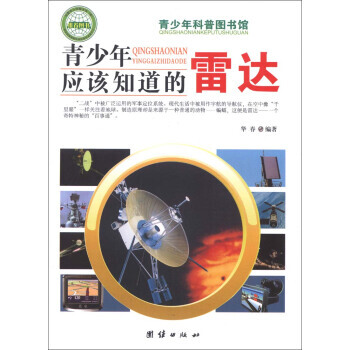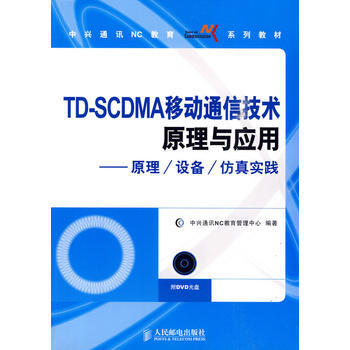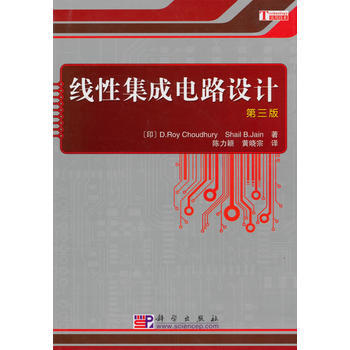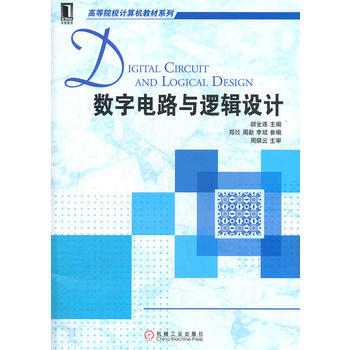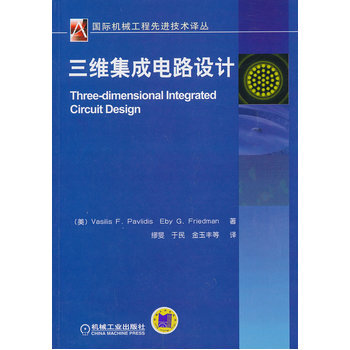

具体描述
基本信息
书名:三维集成电路设计
定价:58.00元
作者:(美)华斯利斯,(美)伊比,缪旻,于民,金玉丰
出版社:机械工业出版社
出版日期:2013-09-01
ISBN:9787111433514
字数:311000
页码:209
版次:1
装帧:平装
开本:16开
商品重量:0.4kg
编辑推荐
内容提要
在21世纪的前十年结束时,基于三维集成技术的“摩尔定律”时代就悄然来临了。具备多个有源器件平面的三维集成电路(3一DIc),有望提供结构紧凑、布线灵活、传输高速化且通道数多的互连结构,从而为Ic设计者们提供突破“互连瓶颈”的有效手段,而且还能够有效集成各种异质材料、器件和信号处理形式,成为三维集成技术发展的主要方向之一。本书是世界上三维集成电路设计方面的本专著,既有一定的理论深度,又有较高的可读性。它系统、严谨地阐释了集成电路三维集成的设计技术基础,包括3一DIC系统的工艺、互连建模、设计与优化、热管理、3一D电路架构以及相应的案例研究,提出了可以高效率解决特定设计问题的解决方案,并给出了设计方面的指南。
本书是一本的技术参考书,适用的读者范围包括:超大规模集成电路(VLSI)设计工程师,微处理器和系统级芯片的设计者以及相关电子设计自动化(EDA)软件的开发者,微机电及微系统集成方面的设计开发者,以及微电子行业中对未来技术走向高度敏感的管理者和投资者。本书也可以作为相关专业研究生的教材和教师的教辅参考书籍。
目录
作者介绍
文摘
序言
用户评价
这本书的装帧设计非常讲究,封面的材质触感很好,而且不易留下指纹,这在实际使用中是一个很贴心的小细节。我之所以会被这本书吸引,很大程度上是因为“三维集成电路”这个词汇本身所蕴含的突破性意义。我们都知道,在信息时代,摩尔定律一直在驱动着集成电路的进步,而当二维空间的极限逐渐逼近时,向三维空间发展无疑是自然而然的趋势。我特别好奇,从二维到三维,这种设计理念上的转变,会对整个芯片的架构产生多么颠覆性的影响?比如,数据的传输路径是否会变得更短,从而提高响应速度?芯片的整体体积是否能够进一步缩小,为更小型化的电子设备提供可能?我对书中关于“堆叠技术”、“垂直互连”等方面的内容充满了期待。如果书中能够提供一些不同三维集成电路结构方案的对比分析,说明它们各自的优缺点以及适用场景,那就更好了。毕竟,了解技术的演进方向和背后的驱动力,能够帮助我更好地理解当前和未来的电子产品发展。
评分The design of this book’s cover is both understated and professional, conveying a sense of intellectual depth. The title, “三维集成电路设计” (3D Integrated Circuit Design), along with the ISBN and publisher details, suggests a reliable and authoritative source of information. My decision to acquire this book is driven by a long-standing curiosity about the evolution of electronic miniaturization. I’ve observed how integrated circuits have consistently pushed the boundaries of what’s possible, and the concept of designing in three dimensions feels like the natural next frontier. I am particularly keen to understand the fundamental shifts in design philosophy that accompany the move to 3D. How does the spatial arrangement of components influence signal routing and latency? What are the primary challenges in manufacturing and testing these complex multi-layered structures? I hope the book will provide a comprehensive overview of these aspects, perhaps including comparative analyses of different 3D integration techniques and their respective advantages and disadvantages. Ultimately, I am seeking to gain a deeper appreciation for the intricate engineering that underpins the creation of these advanced silicon architectures.
评分这本书拿在手里非常有分量,无论是从视觉还是触觉上,都给人一种厚重、专业的感觉。我购买这本书是因为我在工作中偶尔会接触到一些与电子元器件相关的项目,虽然我的主要工作并非直接参与集成电路的设计,但对于提升芯片性能、缩小芯片体积等话题一直保持着浓厚的兴趣。而“三维集成电路设计”这个主题,正是我一直在关注的未来发展方向。我希望这本书能够深入浅出地介绍三维集成电路设计的关键技术和方法,比如如何进行三维建模、如何优化三维堆叠的结构、如何处理三维层之间的通信等。我也希望书中能包含一些实际案例分析,介绍一些成功的三维集成电路产品是如何设计出来的,它们在性能、功耗、成本等方面带来了哪些优势。如果书中能够提供一些关于三维集成电路设计的工具链和软件方面的介绍,那就更好了,能够让我对实际的设计流程有一个更直观的了解。
评分Book’s cover presents a clean and professional aesthetic, with the title “3D Integrated Circuit Design” clearly visible, along with its ISBN and publisher information, all contributing to an image of scholarly authority. My interest in this book stems from a deep-seated fascination with the relentless progress in electronic technology, particularly in the realm of integrated circuits. I’ve always been intrigued by how engineers manage to miniaturize complex functionalities to such astonishing degrees. The notion of “3D Integrated Circuit Design” strikes me as a significant leap forward, a potential paradigm shift in how we conceive and construct the electronic devices that permeate our lives. I am eager to learn about the specific technical hurdles that arise when transitioning from 2D to 3D design. For instance, how are thermal management issues addressed in these densely stacked architectures? What innovative approaches are employed for inter-layer communication and signal integrity? I hope the book delves into these technicalities, offering insights into the cutting-edge methodologies and tools that enable such sophisticated designs. Understanding the practical implications, such as performance enhancements, power efficiency gains, and avenues for further miniaturization, is a key motivation behind my acquisition of this volume.
评分这本书的封面设计简约大气,色调偏冷,给人一种专业、严谨的科技感。书名“三维集成电路设计”几个大字醒目而清晰,下方标注的ISBN号和出版社信息也显得十分正规,让人对内容的权威性产生了初步的信任。我当初购买这本书,纯粹是出于对前沿电子技术的好奇心。虽然我并非该领域的专业人士,但在日常接触电子产品时,常常会对其内部精密的构造产生疑问,特别是那些越来越小巧、功能却越来越强大的设备,总是让人好奇它们是如何实现的。关于“三维集成电路”,这个概念本身就充满了未来感,仿佛是科幻电影中的场景走进了现实。我期待这本书能像一个引路人,为我揭开这层神秘的面纱,让我了解这项技术是如何从概念走向实际应用的。我希望它不仅仅是枯燥的技术手册,更能够包含一些行业发展历程的介绍,甚至是一些令人振奋的成功案例,让我感受到科技进步的魅力。毕竟,了解一项新技术的起源和发展,往往比直接学习技术细节更能激发学习的兴趣和动力。这本书能否做到这一点,是我非常关注的。
评分这本图书的封面设计风格 oldukça minimalistyczny, ale jednocześnie wzbudza poczucie profesjonalizmu i powagi. Tytuł „Projektowanie trójwymiarowych układów scalonych” oraz numer ISBN i informacje o wydawcy sprawiają wrażenie solidnego źródła wiedzy. Moja decyzja o zakupie tej książki wynikała z mojej fascynacji postępem w dziedzinie technologii elektronicznych, szczególnie w kontekście rozwoju układów scalonych. Zawsze byłem zaintrygowany tym, jak inżynierowie są w stanie w coraz mniejszych rozmiarach upakować coraz większą liczbę funkcji. Koncepcja „trójwymiarowego projektowania układów scalonych” jawi mi się jako kolejny przełom w tej dziedzinie, potencjalnie rewolucjonizujący sposób budowy nowoczesnych urządzeń elektronicznych. Mam nadzieję, że książka szczegółowo wyjaśni, jakie są kluczowe wyzwania związane z projektowaniem w trzech wymiarach. Interesuje mnie przede wszystkim, w jaki sposób rozwiązuje się problemy związane z chłodzeniem tak gęsto upakowanych struktur, jak efektywnie zarządza się komunikacją między różnymi warstwami układu, oraz jakie nowe metody projektowania i symulacji są w tym celu wykorzystywane. Chciałbym zrozumieć, jakie korzyści praktyczne płyną z zastosowania tej technologii, na przykład w kontekście wydajności, zużycia energii czy też możliwości miniaturyzacji.
评分The book's cover features a sophisticated design, hinting at the complex subject matter within. The prominent title, "三维集成电路设计" (3D Integrated Circuit Design), along with the ISBN and publisher information, reinforces its academic and technical nature. My interest in this particular volume is fueled by a desire to understand the cutting edge of semiconductor technology. I've been following the advancements in chip design for some time, and the concept of three-dimensional integration represents a significant paradigm shift, moving beyond the limitations of planar layouts. I am eager to explore how engineers are overcoming the inherent complexities of building structures in multiple dimensions. Specifically, I'm interested in the strategies employed for managing heat dissipation in densely packed 3D stacks, the intricate interconnect schemes required to link different layers, and the novel fabrication processes that enable such sophisticated designs. I hope the book offers a thorough examination of these technical challenges, alongside potential solutions and future outlooks for 3D integrated circuit technology.
评分我拿到这本书的时候,首先就被它厚实的纸张和精美的排版所吸引。内页的印刷质量很高,即使是复杂的电路图和示意图,也显得清晰锐利,色彩还原度也不错,这对于需要仔细辨认细节的技术书籍来说至关重要。我一直对集成电路的微缩世界充满敬畏,想象着上面那些微小的元器件是如何协同工作,完成各种复杂功能的。这本书的书名直接点明了主题“三维集成电路设计”,这让我立刻联想到传统的平面电路与立体的堆叠结构之间可能存在的巨大差异。我非常好奇,在三维空间中进行设计,会带来哪些全新的挑战和机遇?是能够大幅度提升芯片的集成度和性能,还是会带来散热、功耗等方面的新问题?我希望这本书能够详细解答这些问题,并且用通俗易懂的语言来解释那些可能非常复杂的概念。例如,书中对于“堆叠”、“互连”等关键技术的阐述,是否能够辅以形象的比喻或者详细的图解,让一个非专业人士也能大致理解其原理?我期望这本书能够在我心中种下一颗对集成电路设计的种子,即使我无法成为一名设计工程师,也能对这个领域有更深刻的认识。
评分This book's cover is characterized by a clean and professional presentation, with the title "三维集成电路设计" (3D Integrated Circuit Design) clearly displayed, alongside its identifying ISBN and publisher details, projecting an image of academic rigor. My acquisition of this book is primarily motivated by an enduring fascination with the relentless innovation in electronic engineering, especially concerning the continuous miniaturization and performance enhancement of integrated circuits. The notion of designing circuits in three dimensions, rather than solely on a two-dimensional plane, represents a profound conceptual shift, one that I believe will shape the future of electronics. I am particularly eager to understand the fundamental principles behind 3D integration. How does the vertical stacking of components impact signal integrity and power delivery? What are the key considerations for managing thermal issues in such complex architectures? I hope this book provides a detailed and accessible explanation of these critical aspects, perhaps illustrating them with clear diagrams and real-world examples, allowing me to grasp the practical implications of this advanced design methodology.
评分这本书的封面设计采用了一种较为内敛的风格,但其专业性却不容忽视。书名“三维集成电路设计”以及配套的ISBN号和出版社信息,都显得十分严谨。我购买这本书的初衷,源于我对电子技术快速发展的惊叹,特别是集成电路在不断突破尺寸和性能的极限。我总觉得,随着技术的进步,芯片的结构必然会从二维平面走向三维立体,以实现更高的集成度和更优越的性能。“三维集成电路设计”这个概念,对我而言充满了无限的可能性。我非常好奇,在三维空间中进行设计,会带来哪些前所未有的技术挑战?比如,如何有效地解决三维堆叠带来的散热问题?如何设计更高效的层间互连技术?书中是否会详细阐述这些技术细节,并提供相关的解决方案?我希望这本书能够为我打开一扇窗,让我窥见集成电路设计的未来图景,了解这项技术如何重塑我们对电子设备的认知,甚至影响到整个科技产业的发展方向。
相关图书
本站所有内容均为互联网搜索引擎提供的公开搜索信息,本站不存储任何数据与内容,任何内容与数据均与本站无关,如有需要请联系相关搜索引擎包括但不限于百度,google,bing,sogou 等,本站所有链接都为正版商品购买链接。
© 2025 windowsfront.com All Rights Reserved. 静流书站 版权所有








